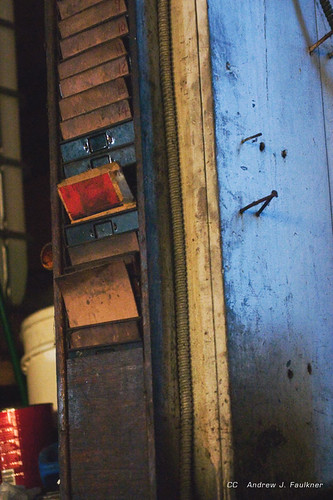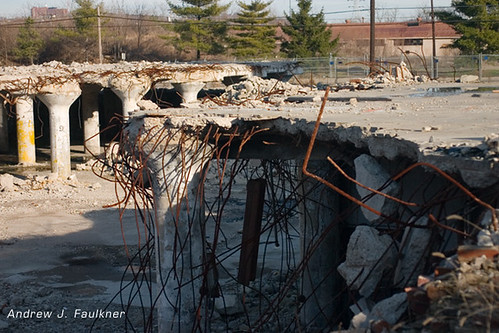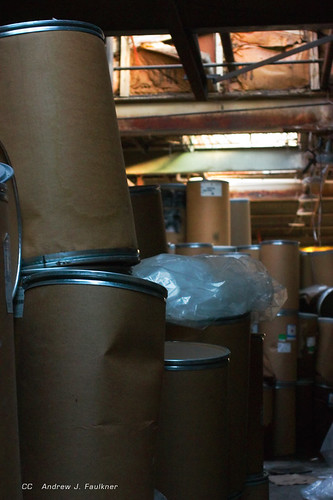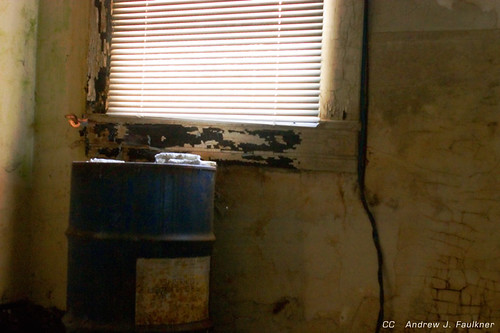It is relatively easy to pass by or through a specific place without fully comprehending the implications of the place on overarching patterns of urbanism or conversely the reflections of larger social and cultural patterns within everyday spaces. In this essay I seek to establish the specific site of St. Louis's Union Station in its current state as both a reflection of larger attitudes to urbanism and a destabilizing force on surrounding areas.
Union Station is a surprisingly late manifestation of the Victorian unease between tradition and rapidly changing technology. Like much earlier examples such as London's St. Pancras Station Union Station consists of a thin street building built in an overly traditional vocabulary (in this case halfway between Richardsonian Romanesque and French Chateau) which disguises a steel framed trainshed from public view. That the stone terminal building was built in St. Louis during the same decade as three muscular modern skyscrapers by Louis Sullivan points to a continuous thread of conservatism which continues to dominate the built environment here to this day.
At the time of its construction the 11 acre trainshed was one of the largest in the world and served a peak of 100,000 passengers a day. Fast forward a half century. The process of urbanization has become internalized. Physical urbanization is no longer necessary as increased communication allows connection by proxy and urban space has been supplanted by a decentralized urban society [see Henri Lefebvre, The Urban Revolution] As physical proximity becomes unimportant and speed of travel increases de-densification increases and the confined vectors of rail transit become less effective; combined with the well documented collusion of government and the auto industry transit and rail foundered. The station officially was mothballed in 1978.
The phenomena of suburbanization and disinvestment in urban areas is also deeply rooted in American culture. In some ways the migration to the suburbs was the technologically aided fulfillment of the dream of Jeffersonian Democracy. As Witold Rybczynski quotes de Tocqueville "The spirit of equality has stamped a particularly uniform pattern on the habits of private life" (Rybczynski, 112.) Rybczynski interprets this as evidence of the United States having the first equally distributed urban society. Unlike Europe there has never been a sharp delineation between sophistication (urban) and rusticity (rural) rather the whole culture falls on a reasonably level ground between the two. Given this proposition (if culture is urbanized urbanization becomes to an extent superfluous) and the rootlessness of the American people (refer to Frederick Jackson Turner's Frontier Thesis) it is reasonable to conclude that the speculative and impermanent nature of the American city is a direct result. As Lefebvre notes "Urban democracy would imply an equality of places" while the traditional urban concept of "centrality would produce hierarchy and therefore inequality" (Lefebvre, 124). Of course the enduring paradox is that once the undemocratic hierarchy of the city is broken through decentralization segregation (economic, racial, ethnic, and social) is the inevitable undemocratic result.
To be continued...
Part I Bibliography:
Lefebvre, Henri. The Urban Revolution. Minneapolis: the University of
Minnesota Press, 2003.
Rybczynski, Witold. City Life: Urban Expectations in a New World. New York:
Scribner, 1995.
New Park Opens in the Santa Clarita Valley
4 hours ago











